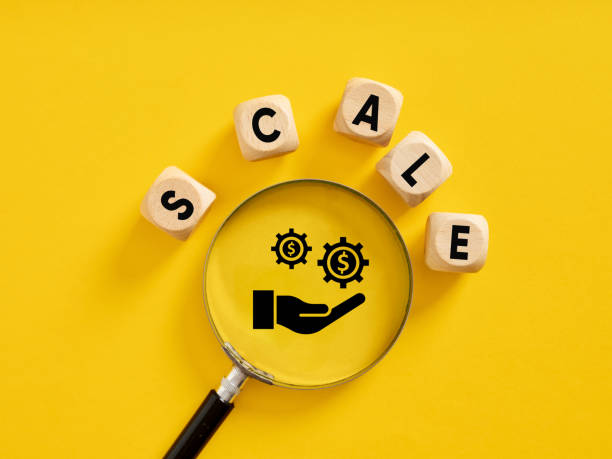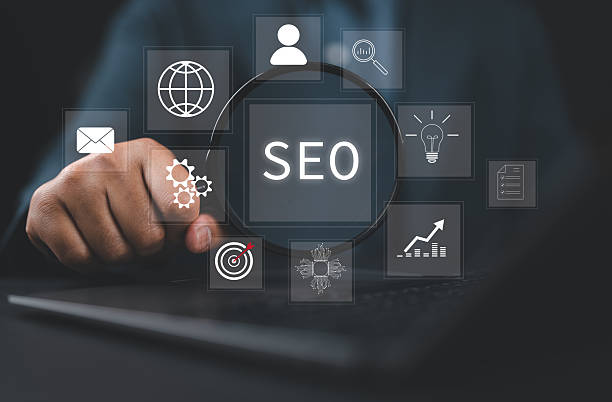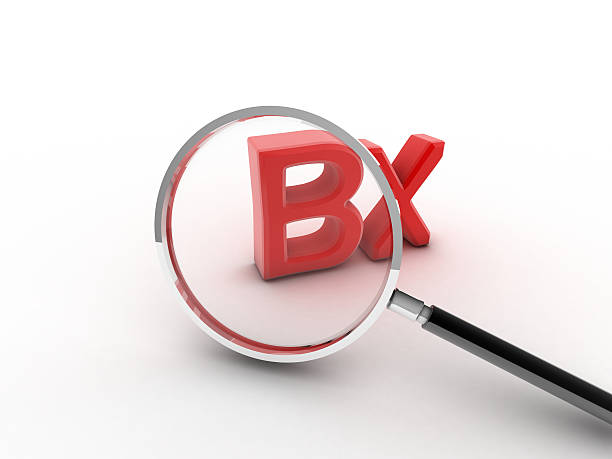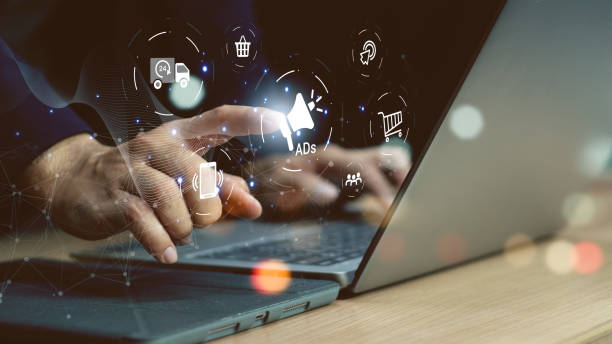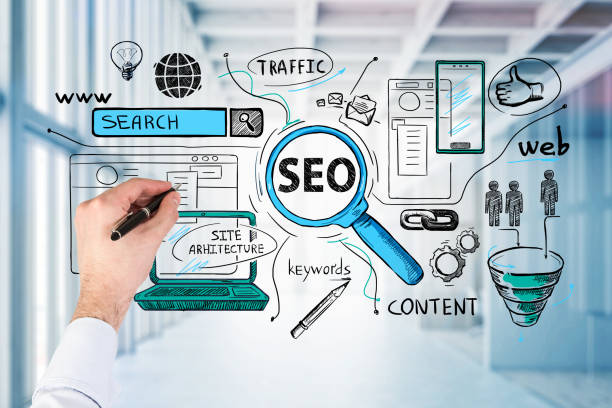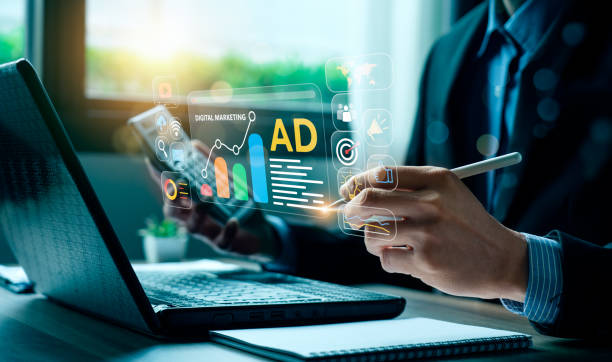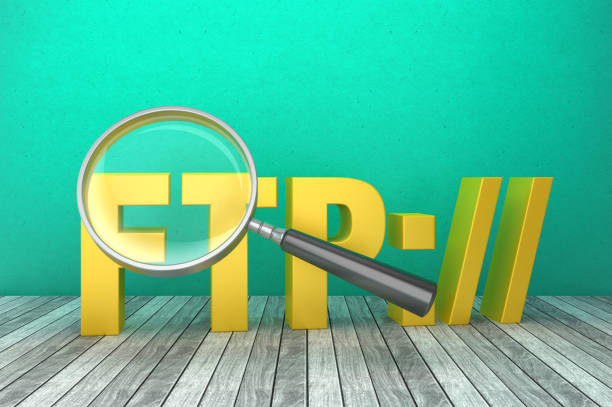What is On-Page SEO and Why is it Important?
On-Page SEO refers to a set of actions that we take within our website to improve its ranking in search engines like Google.
These actions include optimizing content, site structure, HTML tags, and other factors related to the site itself.
Unlike Off-Page SEO, which focuses on activities outside the site like link building, On-Page SEO is directly under our control and can have a significant impact on improving the site’s visibility in search results.
The importance of On-Page SEO lies in the fact that it helps search engines better understand the topic and content of the site’s pages.
By performing appropriate optimizations, we can show search engines that our site is relevant and valuable, and as a result, achieve a better ranking in search results.
#SEO Success in SEO is actually a combination of On-Page SEO, Off-Page SEO, and Technical SEO, but On-Page SEO acts as a fundamental foundation.
On-Page SEO also helps improve User Experience (UX).
A well-optimized site usually has a higher loading speed, easier navigation, and provides engaging and useful content.
These factors cause users to spend more time on the site and increase the likelihood of their return, which itself is a positive signal for search engines.
Therefore, investing in On-Page SEO not only helps improve the site’s ranking, but also increases user satisfaction and improves the overall performance of the online business.
Is your company’s website as professional and reliable as it should be? Create an online presence that reflects your credibility and attracts more customers with specialized corporate website design by Rasaweb.
✅ Build a powerful and professional image of your brand
✅ Turn visitors into real customers
⚡ Get a free consultation now!
Keyword Research – Finding the Best Phrases to Target
Keyword Research is the first and most important step in On-Page SEO.
Before anything else, we need to know what words users use to find information related to our business.
Using keyword research tools like Ahrefs, Moz Keyword Explorer, Ubersuggest, and Keyword Tool, we can create a list of words and phrases related to our field of work.
These tools provide information such as search volume, competition level, and related suggested keywords.
Click here to preview your posts with PRO themes ››
In the keyword research process, we should look for words that have both a decent search volume and lower competition.
These words usually provide good opportunities to gain a high ranking in search results.
Also, we should pay attention to User Intent.
Is the user looking for information, intending to buy, or wanting to be directed to a specific page? By understanding the user’s intent, we can produce content that best meets their needs.
For example, if the user is looking for an On-Page SEO tutorial, we should provide a comprehensive and practical guide.
Using this information, we can develop our On-Page SEO strategy based on appropriate keywords and create content that is both attractive to users and optimized for search engines.
On-Page SEO plays an important role in this step.
Optimizing Page Title (Title Tag) and Meta Description
The Title Tag and Meta Description are two important HTML elements that are displayed in search results and play an important role in attracting users to our site.
The page title should be concise and relevant to the page content, and the main keyword should be included in it.
It is best for the page title to be between 50 and 60 characters long to be fully displayed in search results.
The meta description should also provide an attractive and descriptive summary of the page content and encourage the user to click.
The meta description should be between 150 and 160 characters long.
A good title and meta description can significantly increase the site’s Click-Through Rate (CTR).
In optimizing the page title and meta description, the following should be considered:
- Use of relevant keywords: The main keywords should be used in the page title and meta description.
- Being attractive and descriptive: The title and description should be attractive and descriptive and encourage the user to click.
- Being unique: Each page should have its own unique title and meta description.
- Observing the appropriate length: The length of the title and description should be within the recommended range.
Click here to preview your posts with PRO themes ››
On-Page SEO plays an important role in optimizing the page title and meta description.
On-Page SEO is an ongoing process and should be regularly updated to keep pace with changes in search engine algorithms.
| Element | Description | Importance in SEO |
|---|---|---|
| Title Tag | The title of the page displayed in search results | Very High |
| Meta Description | A brief description of the page content displayed in search results | High |
Content Optimization – Creating High-Quality and Relevant Content
Content is king! This phrase is cliché but very true.
High-quality and relevant content is the main factor for success in On-Page SEO.
Your content should meet the needs of users, provide valuable information, and encourage them to stay on the site.
To create optimized content, the following should be considered:
- Keyword Research: Content should be created based on researched keywords.
- Providing Valuable Information: Content should provide valuable and useful information to users.
- Appropriate Structure: Content should have an appropriate structure and use headings, subheadings, images, and videos.
- High Readability: Content should be readable and understandable and use short and fluent sentences.
- Constant Updates: Content should be updated regularly to provide new and accurate information.
On-Page SEO plays an important role in content optimization.
Also, we should try to produce unique and original content.
Copying content from others not only does not help the site’s ranking, but may also cause the site to be penalized by search engines.
Try to produce content that has added value and encourages users to share it.
On-Page SEO helps you produce content that is both attractive to users and optimized for search engines.
Did you know that 85% of customers check your company’s website before any interaction?
Build a corporate website worthy of your credibility with Rasaweb.
✅ Increase credibility and customer trust
✅ Attract high-quality leads
⚡ Get a free website design consultation
Image Optimization – Using Optimized Images and ALT Tags
Images play an important role in the attractiveness and better understanding of content, but improper use of images can reduce the site’s loading speed and harm SEO.
To optimize images, the following should be considered:
- Choosing the right format: JPEG and PNG formats are usually suitable for web images.
- Reducing image size: Image size should be reduced as much as possible to increase the site’s loading speed.
- Using ALT tags: The ALT tag should provide a description of the image and use a relevant keyword in it.
- Choosing the right file name: The image file name should be related to its content.
The ALT tag helps search engines understand the content of the image and display it in image search results.
A good ALT tag can increase site traffic through image search.
Also, the ALT tag is essential for users who use screen readers.
On-Page SEO plays an important role in image optimization.
By optimizing images, we can both improve the user experience and help the site’s On-Page SEO.
On-Page SEO is an ongoing process and should be regularly updated to keep pace with changes in search engine algorithms.
URL Optimization – Creating SEO-Friendly URLs
The structure of site URLs plays an important role in On-Page SEO.
URLs should be short, descriptive, and include the main keyword.
Long and complex URLs are not only confusing for users, but also more difficult for search engines to understand.
To optimize URLs, the following should be considered:
- Using keywords: The URL should include the main keyword.
- Being short: The URL should be as short as possible.
- Being descriptive: The URL should be descriptive of the page content.
- Using hyphens: Use hyphens (-) to separate words in the URL.
- Avoiding uppercase letters: URLs should be written in lowercase letters.
For example, instead of using a URL like www.example.com/page?id=123, it is better to use a URL like www.example.com/seo-internal-guide.
This URL is not only more understandable for users, but also helps search engines better understand the topic of the page.
On-Page SEO plays an important role in URL optimization.
Also, we should try to create a logical and hierarchical structure for the site’s URLs.
On-Page SEO helps you produce content that is both attractive to users and optimized for search engines.
Site Speed Optimization – Increasing Page Loading Speed
Site loading speed is one of the important factors in On-Page SEO and user experience.
Users who experience a slow site loading speed usually leave the site and go to your competitors.
Search engines also consider site speed as a ranking factor.
To increase site speed, the following should be considered:
- Image Optimization: Image size should be reduced as much as possible.
- Using CDN: Using a Content Delivery Network (CDN) can increase site loading speed for users around the world.
- Enabling Gzip Compression: Gzip compression can reduce the size of HTML, CSS, and JavaScript files.
- Reducing HTTP Requests: Reducing the number of HTTP requests can increase the site’s loading speed.
- Using Cache: Using cache can increase the site’s loading speed for users who have previously visited the site.
On-Page SEO plays an important role in site speed optimization.
There are various tools for testing site speed that can be used to identify problems and provide improvement solutions.
Some of these tools are Google PageSpeed Insights and GTmetrix.
On-Page SEO is an ongoing process and should be regularly updated to keep pace with changes in search engine algorithms.
| Factor | Description | Improvement Solution |
|---|---|---|
| Image Size | Large images reduce loading speed. | Optimizing and reducing image size |
| HTTP Requests | A large number of requests to the server slows down the speed. | Merging files, using CDN |
| Coding | Unoptimized code can slow down the speed. | Optimizing codes, compressing codes |
Using Internal Links – Improving Navigation and SEO
Internal Links are links that connect different pages of a site to each other.
Using internal links not only helps improve site navigation, but also helps search engines better understand the site’s structure and determine the value of different pages.
To use internal links, the following should be considered:
- Creating related links: Links should be created between related pages.
- Using appropriate anchor text: Anchor Text should be descriptive of the destination page and use a relevant keyword in it.
- Appropriate number of links: The number of internal links on each page should be appropriate.
By using internal links, we can show search engines which pages of the site are more important and which pages are related to each other.
On-Page SEO plays a role in the use of internal links.
Also, internal links can direct users to other pages of the site and increase their dwell time.
By using these techniques in On-Page SEO, you can help improve the site’s ranking in search engines.
On-Page SEO helps you produce content that is both attractive to users and optimized for search engines.
How much does it cost you to lose business leads due to an unprofessional site? Solve this problem forever with professional corporate website design by Rasaweb!
✅ Increase the credibility and trust of potential customers
✅ Easier attraction of new business leads
⚡ Get a free consultation now!
Mobile Optimization – Creating a Responsive Site
Today, more than half of web traffic is done through mobile devices.
Therefore, Mobile Optimization is essential.
Search engines also prioritize sites that are optimized for mobile in their ranking.
To optimize the site for mobile, the following should be considered:
- Using Responsive Design: Responsive design allows the site to automatically adapt to the screen size of different devices.
- Optimizing Site Speed: The site’s loading speed should be high on mobile devices.
- Using Readable Fonts: The fonts used on the site should be readable on mobile devices.
- Avoiding the use of Flash: Flash is not supported on mobile devices.
By optimizing the site for mobile, we can improve the user experience and increase the site’s ranking in search engines.
Also, mobile optimization can also increase the Conversion Rate.
On-Page SEO plays an important role in mobile optimization.
On-Page SEO helps you produce content that is both attractive to users and optimized for search engines.
Continuous Review and Update – Adapting to Algorithm Changes
On-Page SEO is an ongoing process and requires continuous review and update.
Search engine algorithms are constantly changing, and to maintain the site’s ranking, we must keep pace with these changes.
To continuously review and update On-Page SEO, the following should be considered:
- Monitoring Site Ranking: The site ranking should be monitored regularly.
- Checking Site Traffic: Site traffic should be checked regularly.
- Analyzing Competitors: Competitors’ activities should be analyzed regularly.
- Updating Content: Content should be updated regularly.
- Adapting to Algorithm Changes: We must keep pace with changes in search engine algorithms and take the necessary actions.
By continuously reviewing and updating On-Page SEO, we can maintain the site’s ranking in search engines and increase site traffic.
On-Page SEO is a dynamic process and requires effort and perseverance.
Also, various SEO tools should be used to check the site’s performance and identify problems.
By taking these actions, we can achieve desirable results in On-Page SEO.
On-Page SEO is an ongoing process and should be regularly updated to keep pace with changes in search engine algorithms.
Frequently Asked Questions
| Question | Answer |
|---|---|
| What is a Meta Title and why is it important in On-Page SEO? | The Meta Title is the most important element of On-Page SEO, which is displayed at the top of the browser tab and in search results. This title helps search engines and users understand the main topic of the page and should include the main keyword. |
| What role does the Meta Description play in On-Page SEO? | The Meta Description is a short summary of the page’s content, which is displayed below the title in search results. Although it does not directly affect ranking, its attractiveness can increase the Click-Through Rate (CTR). |
| How should keywords be used in the page content? | Keywords should be used naturally and relevantly in strategic locations such as the title, headings, first paragraph, and body text. Avoid excessive keyword stuffing. |
| What is the importance of high-quality and comprehensive content in On-Page SEO? | High-quality, unique, informative, and comprehensive content that meets the user’s needs is of great importance. Search engines give a higher ranking to content that creates real value. |
| What is the application of Heading Tags (H1-H6) in the On-Page SEO structure? | Heading tags (H1, H2, H3, etc.) are used to structure content and specify the importance of different sections. H1 is the main title of the page and each page should have only one H1. Other tags are used for subheadings. |
| How to optimize images to improve On-Page SEO? | To optimize images, use descriptive Alternative Text (Alt Text) that includes relevant keywords, reduce the image file size without losing quality, and use meaningful and relevant file names. |
| What are the characteristics of an SEO-friendly URL for On-Page SEO? | An SEO-friendly URL should be short, readable, descriptive, include the main keywords, and be free of extra characters. The URL structure should be hierarchical and logical so that it is understandable for both users and search engines. |
| How does Internal Linking help On-Page SEO? | Internal Linking by connecting related pages to each other helps users and search engine crawlers to better understand the site’s structure, transfer the authority of pages, and increase the time a user spends on the site. |
| What is the impact of page loading speed on On-Page SEO? | High loading speed is critical for both user experience and SEO ranking. Slower pages may be ignored by search engines and lead to an increase in the Bounce Rate. |
| Why is Mobile-Friendliness so important in On-Page SEO? | Given the increasing number of searches via mobile devices, having a responsive and mobile-compatible site for user experience and ranking in search results (Google’s Mobile-First Indexing) is essential. |
And other services of Rasa Web advertising agency in the field of advertising
Smart Digital Branding: A dedicated service for customer growth based on accurate target audience targeting.
Smart Marketplace: A fast and efficient solution to increase site visits with a focus on smart data analysis.
Smart Data Analysis: Professional optimization for digital branding using an SEO-driven content strategy.
Smart Link Building: A dedicated service to improve SEO ranking based on Google Ads management.
Smart Conversion Rate Optimization: A professional solution for user engagement with a focus on marketing automation.
And more than hundreds of other services in the field of internet advertising, advertising consulting and organizational solutions
Internet Advertising | Advertising Strategy | Advertorial
Resources
HubSpot Inbound Marketing
,Moz On-Page Optimization
,Ahrefs On-Page SEO
,Search Engine Land On-Page SEO Guide
? For a leap forward in your business, Rasaweb Digital Marketing Agency, with expertise in Corporate Website Design and providing comprehensive strategies, is by your side to have a powerful presence in the online world.
📍 Tehran, Mirdamad Street, next to the Central Bank, South Kazerun Alley, Ramin Alley No. 6


